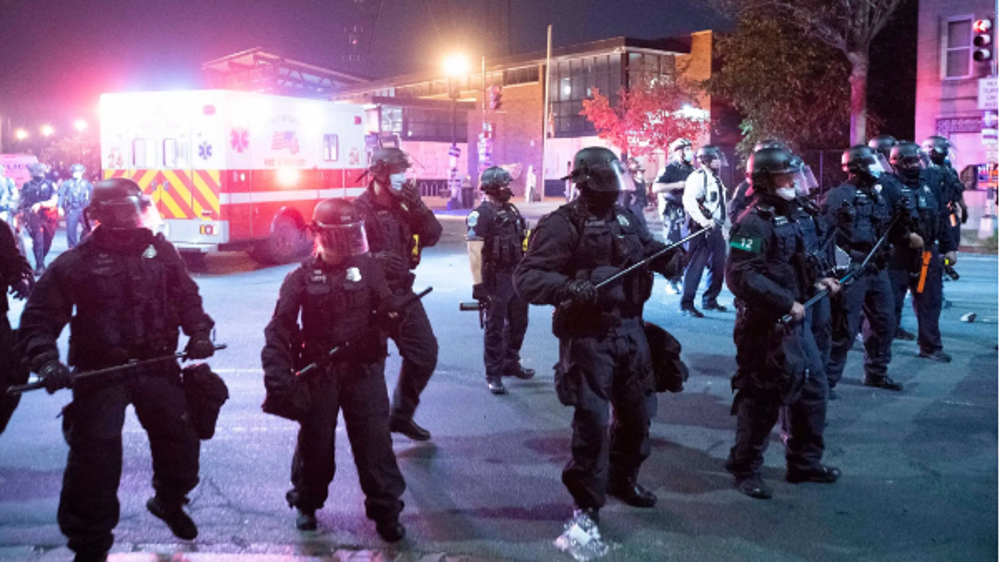Tropical Storm Barry takes aim at Louisiana, nears hurricane strength
Millions of residents in Louisiana on Saturday braced for Tropical Storm Barry, which lashed the southern US state with strong winds and heavy rain as it edged towards shore at near-hurricane strength.
Louisiana Governor John Bel Edwards said the state's largest city New Orleans was well prepared to withstand the storm, but urged vigilance by residents across the state, as authorities called on people to stay off the streets.
"No one should take this storm lightly," Edwards said on Twitter.
Authorities ramped up evacuations, airlines canceled flights and flood gates slammed shut as the National Hurricane Center (NHC) forecast the storm would reach hurricane status before making landfall along the US Gulf Coast.
At 1200 GMT, the storm was packing winds of 70 miles (115 kilometers) an hour -- just below hurricane strength -- and was located about 50 miles (80 km) from Morgan City, to the west of New Orleans.
In Morgan City, the streets were empty as heavy rain fell. The Atchafalaya River had flooded its banks, and trees were already blown over in residential areas.
The storm was only moving at five miles (eight km) an hour, meaning landfall could be a while off.
"It's painstakingly slow," government meteorologist Ben Schott told CNN, noting that residents should not be lulled into complacency about facing the storm.
"If you don't have to go anywhere, stay home. Monitor what's going on. Do not put yourself at risk."
With Barry threatening massive rainfall across several southern states, federal emergency declarations were issued to help free up resources to address the storm.
For many, the large storm swirling in the Gulf of Mexico and the potential for large-scale flooding in coastal and river areas has brought with it unpleasant memories of 2005's deadly Hurricane Katrina.
Thousands have packed up and left their homes as flood waters hit low-lying areas like Plaquemines Parish, where road closures left some communities isolated.
Dozens took shelter in Plaquemines's Belle Chasse auditorium, while others headed inland to stay with friends or relatives.
Some nevertheless hunkered down to ride out the storm, despite mandatory evacuation orders.
"We've stayed for some pretty strong storms and we shouldn't have," admitted Keith Delahoussaye, a 60-year-old mechanic, at his trailer home in Port Sulphur.
He was keeping a close eye on the nearby Mississippi River. "If we see the water rising here, we'll leave," he said.
In New Orleans, residents and business owners were laying down sandbags and boarding up windows while city officials set up shelters for residents.
But local revelers and tourists drank "hurricane" cocktails and sang arm in arm as they walked down Bourbon Street late Friday, ignoring warnings from Mayor LaToya Cantrell to stay indoors.
On Saturday, Cantrell again urged caution, saying: "A lot of the rain won't happen until after landfall."
If the storm becomes a hurricane, it would be the first of the Atlantic season, which runs from June to November.
Dangerous conditions
Louisiana is facing an extraordinarily dangerous confluence of conditions, experts say.
The level of the Mississippi River, already swollen from historic rains and flooding upstream, was at nearly 17 feet (5.2 meters) in New Orleans -- just below flood stage.
River levels are expected to peak at just over 17 feet (five meters), according to Saturday's forecast by the National Oceanic and Atmospheric Administration (NOAA).
But with storm surges of three to six feet (0.9 to 1.8 meters) projected, and 10 to 20 inches (25 to 50 centimeters) of rain forecast, authorities were keeping close watch on the 20-foot-high levee system protecting the city of 400,000.
"Much of the Gulf Coast, especially Louisiana, are already at extremely high water levels and so the heavy rains and any potential storm surge will lead to dangerous flash flooding," Jill Trepanier, an expert at Louisiana State University, said in a statement.
Mike Yenni, president of Jefferson Parish near New Orleans, said the community had taken the "unprecedented" step of closing hundreds of flood gates, largely due to the high levels of the Mississippi.
Authorities closed highways in several locations along the coast as flood waters began creeping in.
In St. John's Parish next to New Orleans, some communities were under two or more feet of water, local television footage showed.
In 2005, Katrina -- the costliest and deadliest hurricane in US history -- submerged about 80 percent of New Orleans, causing some 1,800 deaths and more than $150 billion in damage.
The city's main sports arena, the Superdome, was turned into an emergency shelter during Katrina.
The facility was due to host a concert by the Rolling Stones on Sunday, but it was postponed by a day due to Barry.
"We're here with you -- we'll get through this together," the band said in a statement.
(Source: AFP)
Iran begins Ten-Day ceremonies to mark victory of Islamic Revolution
Israel steps up violations of Lebanon ceasefire
Official: Hamas will continue to administer Gaza, going nowhere
Six Israeli soldiers killed, injured as Jenin fights back onslaught
VIDEO | Anniversary of Hind Rajab's martyrdom
VIDEO | 'Friends of Palestine' demands suspension of Israel from UN bodies
Trump insists Egypt, Jordan will accept displaced Gazans
VIDEO | Press TV's news headlines











 This makes it easy to access the Press TV website
This makes it easy to access the Press TV website